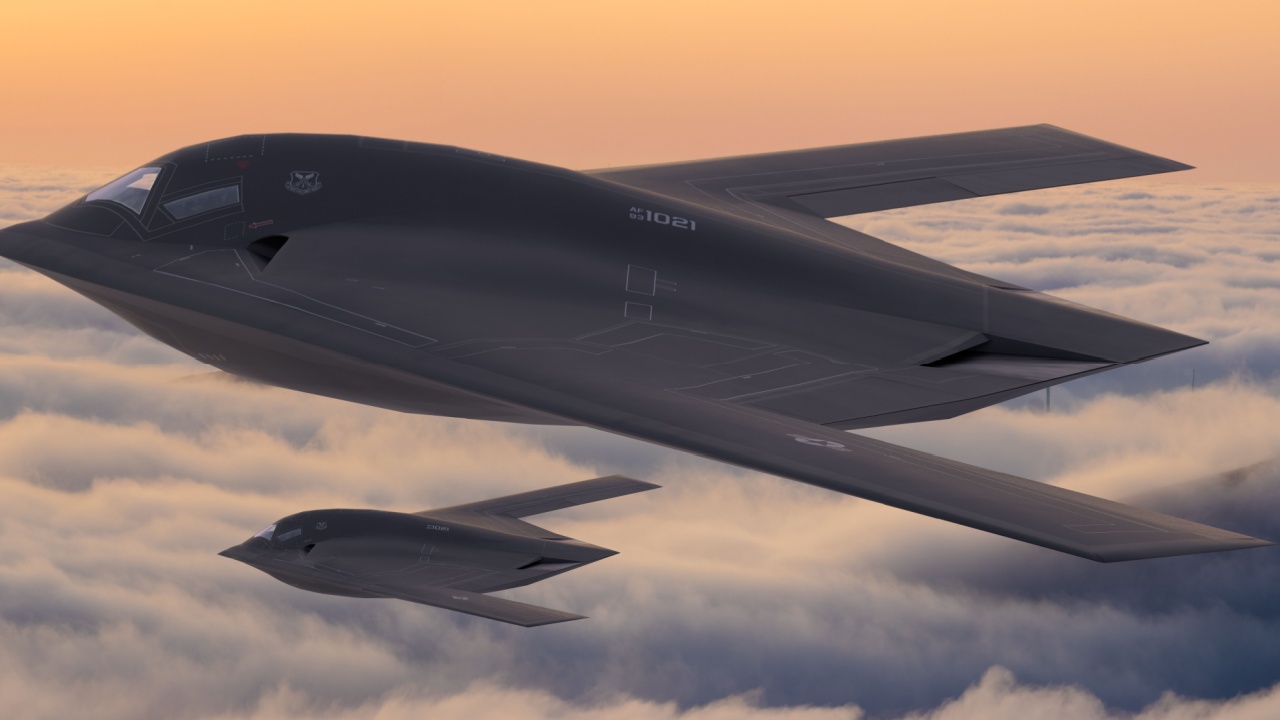
The B-2s in the Indian Ocean Aren’t Just for Show!
Beginning last month, the B-2 bombers were sent to the island of Diego Garcia in the Chagos Archipelago as part of the U.S. military’s build-up in the region.
The United States Air Force may have deployed as many as six Northrop B-2 Spirit long-range strategic bombers to the British island territory of Diego Garcia, and there are now reports that the aircraft are there for more than show or to serve as a deterrent to Iran.
According to a report from CNN, the B-2s have been employed in strikes against the Tehran-backed Houthi militants in Yemen. The bombers were sent to the island in the Chagos Archipelago beginning last month as part of the U.S. military’s build-up in the region.
Nearly One-Third of the B-2 Fleet on One Island
The deployment of six B-2s is especially noteworthy as it would account for nearly one-third of the total fleet; the U.S. Air Force currently has just nineteen operational flying wing bombers in its inventory.
Moreover, as The War Zone also reported, those nineteen aircraft aren’t all available for operations simultaneously, which further highlights the significance of this massing of aircraft on the remote island.
The exact targets that the Spirits have hit aren’t known. Still, it is well-established that the Houthis have gone to ground in Yemen, where they operate an extensive network of tunnels, bunkers, and other underground facilities.
“The B-2 is currently the only U.S. aircraft certified to operationally employ the 30,000-pound GBU-57/B Massive Ordnance Penetrator (MOP) bunker buster bombs,” TWZ added. While it is not known if the MOP has been used against the Houthis’ bunkers, it would make sense to have the delivery platform at the ready should it be needed.
The aircraft, and potentially the MOPs, could be well-positioned to hit Iran’s nuclear facilities, which are also housed underground in hardened bunkers. Each B-2 can carry two of the bunker-buster bombs, meaning a full dozen could be made to follow through on President Donald Trump’s vow if Tehran fails to come to an agreement with Washington over the Iranian nuclear program.
“If they don’t make a deal, there will be bombing,” per Reuters.
“It will be bombing the likes they have never seen before.”
Sending the B-2s Abroad Is a Billion Dollar Operation
As previously reported, a recently published satellite image of the six bombers on the flight line at Camp Thunder Bay on Diego Garcia showed aircraft worth billions of dollars, more than six billion, to be accurate, given the $1.1 billion price tag per aircraft.
The ongoing operation has surpassed the $1 billion mark since the United States launched its latest offensive on March 15. According to CNN, the Pentagon has fired “hundreds of millions of dollars worth of munitions for strikes against the group, including JASSM long-range cruise missiles, JSOWs, which are GPS-guided glide bombs, and Tomahawk missiles.”
Add in the operational costs of the B-2, the support aircraft, including refuelers and ground personnel, and the deployment of two nuclear-powered aircraft carriers and their strike groups, and it is clear that fighting the Houthi militants is becoming expensive fast.
Will the Expensive B-2 Relocation Pay Off?
It could be argued that the billion dollars would have been well spent if the strikes had seriously incapacitated the Houthis. But that isn’t the case.
“[The U.S. military has] taken out some sites, but that hasn’t affected the Houthis’ ability to continue shooting at ships in the Red Sea or shooting down U.S. drones,” a U.S. source briefed on the operation told CNN.
“Meanwhile, we are burning through readiness—munitions, fuel, deployment time.”
Trump also vowed to use “overwhelming force” to stop the Houthis, which began their campaign of targeting shipping in the Red Sea after Israel launched its invasion of Gaza in October 2023. The U.S. has claimed success, yet commercial shipping has diminished, and the Houthis remain operational.
The militant group has endured years of war against an international coalition led by Saudi Arabia, and instead of being deterred by the U.S. bombing, it has been emboldened. It may take the use of the MOPs, lots and lots of them, to bring the Houthis to their knees, but it could also further embolden the group.
The United States may be able to defeat extensive regimes in Nazi Germany, Imperial Japan, and even Iraq. However, when fighting an insurgent force willing to take significant damage and losses, history has shown that the best course is to wait out America.
That happened in Vietnam and, more recently, in Afghanistan, and with the ongoing campaign costing more than a billion dollars a month, the wait may not be that long.
About the Author: Peter Suciu
Peter Suciu is a Michigan-based writer. He has contributed to more than four dozen magazines, newspapers, and websites with over 3,200 published pieces over a twenty-year career in journalism. He regularly writes about military hardware, firearms history, cybersecurity, politics, and international affairs. Peter is also a Contributing Writer for Forbes and Clearance Jobs. You can follow him on Twitter: @PeterSuciu. You can email the author: [email protected].
Image: Shutterstock/ Mike Mareen.